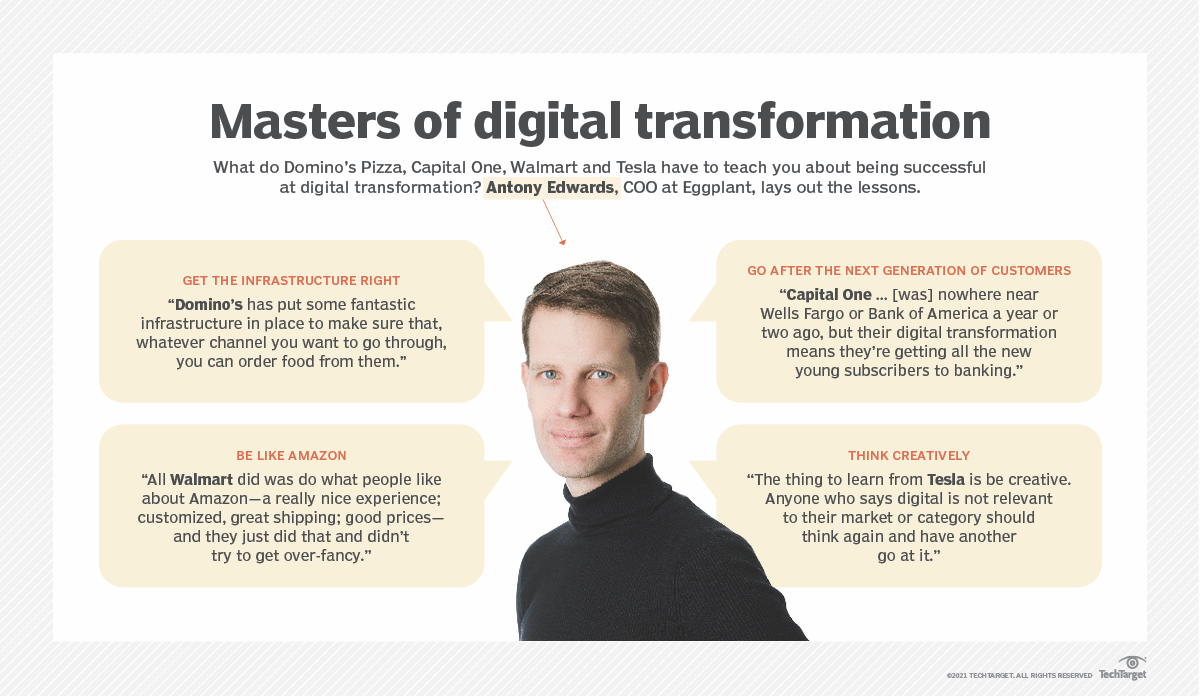Digital Transformation: What It Is and Why It Matters
With learnings from heavy hitters like IKEA, Netflix and Amazon
To survive the rapidly changing business climate of the 21st century, digital transformation has become an indispensable part of organisational strategy. As such, it’s essential that you have a deep understanding of the technologies and principles that underpin digital transformation—and the key factor that drives it.
What is Digital Transformation?
Digital transformation is the integration of digital technology into all areas of a business, fundamentally changing how it operates and delivers value to customers. More than just migrating to the cloud, it entails the reimagining of business in the digital age.
According to the Digital Transformation Index from Dell Technologies, a third of enterprise leaders are worried their organisations will not survive in the coming years. It is little wonder then that 92% of executives surveyed by the Harvard Business Review say their organisation’s digital transformation will become one of the most vital aspects of business success over the next 12 months.
Staying Ahead of the Curve
The main force behind digital transformation is technology’s capacity for quick data generation, collection, analysis and transmission. We now receive information at lightning speed, thanks to innovations in artificial intelligence (AI), cloud computing, mobile technology, social media platforms and next-generation technologies like the internet of things (IoT), edge computing, and robotic process automation (RPA).
Successful digital transitions produce long-term advantages for businesses; organisations can effectively adapt to client expectations both now and as they change, thanks to digital technologies and processes. Additionally, digital transformation creates the framework and competencies necessary for taking advantage of quickly developing technologies that provide a competitive edge in the marketplace.

Photo by peshkov on VistaCreate
“It is not the strongest of the species that survives, nor the most intelligent that survives. It is the one that is the most adaptable to change,” Charles Darwin said. To stay ahead of the curve, industry leaders need to remain agile and adaptable to change—paying attention to the customer journey in order to identify critical areas to improve.
Organisations like IKEA, the Scandinavian chain that sells ready-to-assemble furniture and houseware, recognised this ahead of others in 2020. Even though the public was barred from entering the stores during Covid lockdowns, IKEA’s online company continued to run well. The company improved the online shopping experience for customers and used e-commerce as the foundation of its operations. In order to protect customers and employees, innovative services like contactless curbside delivery were also implemented during this time, as online shopping became more popular.
CLIC: The Core Principles
The core principles of digital transformation are just a CLIC (Culture, Leadership, Innovation, and Change) away.
- Culture: Define and support a mission-driven culture that embraces change, allows for failure and encourages curiosity.
- Leadership: Secure approval and direction from senior leadership to support digital transformation initiatives.
- Innovation: Communicate and collaborate to support ongoing innovation.
- Change: Build an organisation capable of changing in an agile and efficient way.
What Drives Digital Transformation

Source: SmallBizDaily
For organisations to CLIC, the key is hiring the right talent they will need to drive the digital transformation of their business. Digital transformation requires cross-departmental collaboration in pairing business-focused philosophies with rapid application development models. Organisations making the digital pivot need the right group of people in the room—what can be called the four knights of change:
- Software engineers: Design, develop and maintain software systems and programmes that make the digital world possible.
- Data analysts: Analyse, process and model data to extract pivotal insights and create actionable plans for companies.
- Cloud developers: Design, develop and manage secure cloud-based applications, services and solutions.
- Cybersecurity engineers: Design and implement secure network solutions to defend against hackers, cyberattacks and other persistent threats, continually testing and monitoring systems to make sure that all defences are up to date and working correctly.
Harnessing the Power of Digital Transformation
Digital transformation is not only for those selling goods and entertainment services, but also critical for historically brick-and-mortar businesses.
Netflix recognised the value of incorporating the CLIC principles with these knights of change. By reading the (streaming) room and taking advantage of customer data, they were able to develop models for transforming their business. The Netflix offering shifted from mail-in orders to a cloud streaming service, and in the process, improved customer satisfaction and made the company billions. When it switched to the cloud, client loyalty increased and Netflix established a brand that rivals are now battling tooth and nail to surpass. It serves as the ultimate digital transformation case study.
“Think of digital transformation less as a technology project to be finished than as a state of perpetual agility, always ready to evolve for whatever customers want next, and you’ll be pointed down the right path,” Amit Zavery, the VP and Head of Platform at Google Cloud says.
Companies like Amazon also managed to harness the power of digital technologies to disrupt the markets in which they operate. Amazon started strictly as an online bookseller, but now has evolved into an electronic commerce (e-commerce) juggernaut that has redefined the retail industry.

Source: TechTarget
In essence, to digitise is to survive. Daunting as it may seem, digital transformation doesn’t have to be scary; it can propel any organisation willing to CLIC into the future. Leaders can and should use it as an opportunity to remain competitive and relevant as the world becomes increasingly digital. It should be seen as a prompt to rethink old operating models, experiment more, and become more agile in your ability to respond to customers and rivals. Real transformation comes when you look at all available technologies and consider how adapting your business can give customers a better experience.
More than anything else, talent is the essential ingredient that makes digital transformation possible. Harnessing the skills, knowledge, energy and proficiencies of technologically-savvy talent will enable your team and your business to thrive, particularly when it comes to the ‘four knights of change’. Of course, success is not always guaranteed, even with the best talent, but its absence virtually guarantees failure.
As Becky Frankiewicz and Tomas Chamorro-Premuzic of Datonomy Solutions note, “Everything in business can be copied except for talent, so if you are looking for impact, do invest in top talent, which is where you will get the most value.”
Find top talent at The ROOM, a home to a lifelong, highly specialised community of skilled and early-stage technology talent that will power the future. Visit The ROOM to access the talent you need to drive the digital transformation of your organisation.

